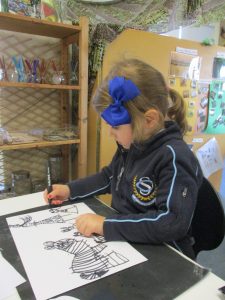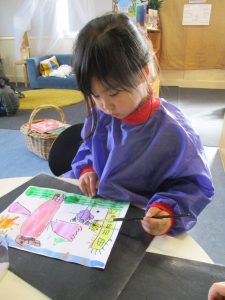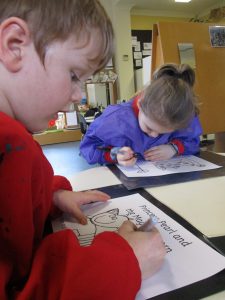Writing and Illustrating Books

The children in the Banksia Room have been demonstrating a strong interest in writing, books and playing with words and sounds. To support and extend upon this interest, educators worked with the children to write their own book. Across several days, educators selected books to read that had clear structures to help build the children’s understanding of books and story creation. The children thought about the characters that were in the stories and what happened in the beginning, middle and end.
The first step for the children to write their own story involved brainstorming the characters and deciding upon their names. This entailed multiple suggestions and a process of voting to come to a consensus upon the names of the characters. The next step was to plan what would happen in the beginning of the story, what if complication would happen in the middle of the story, and then in the end of the story, how the complication was resolved.
After writing and revising their story to include all their characters, the children worked on the illustrations. Educators read the words on the page and used verbal scaffolding to ensure that the illustrations matched the text. The children worked with great concentration using black fineliner pens and watercolour dyes to illustrate their book.
The learning intention of this activity was to teach the children about organising their thoughts. The children are building their understanding about how written language is used to communicate with readers. Writing stories also assists children to develop a stronger interest into stories and reading, as well as building a deeper understanding of stories.
I hoped that this class inquiry would act as a provocation for the children to write and illustrate their own stories, and I am delighted that some of the children are beginning to draft their own individual stories.





